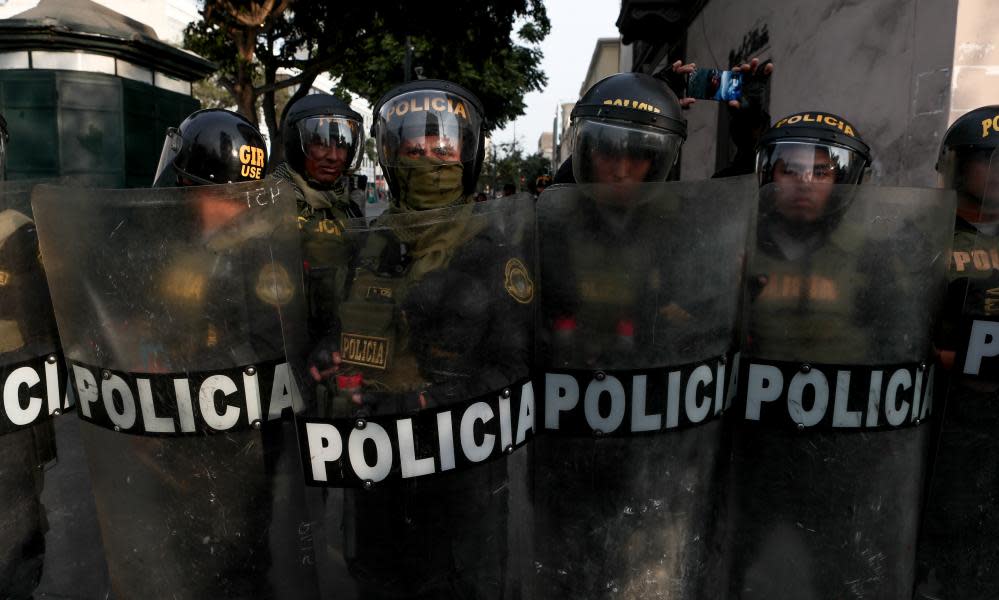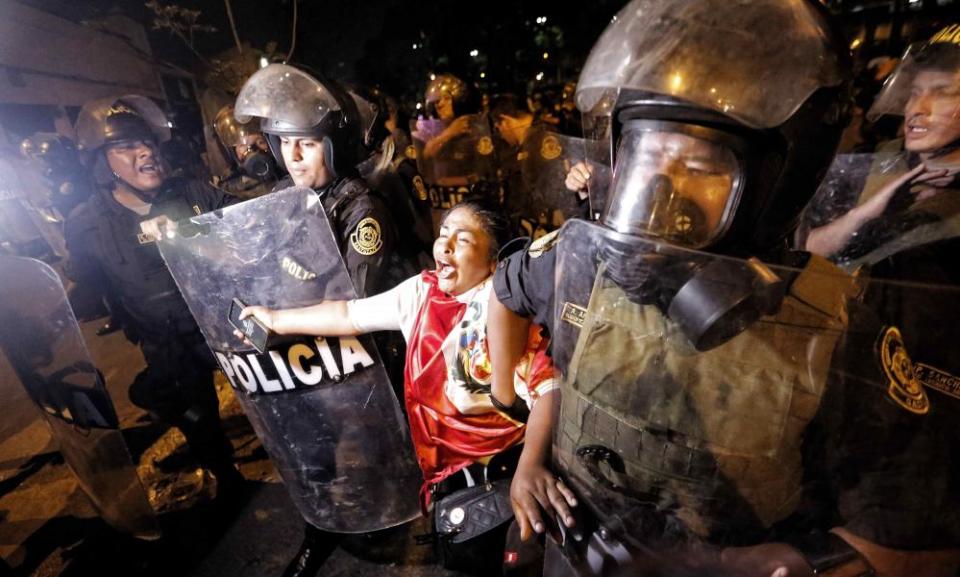Peru’s ‘racist bias’ drove lethal police response to protests, Amnesty says

Peru used “excessive and lethal force” driven by “marked racist bias” against a largely indigenous and campesino population, Amnesty International has concluded, following an investigation into more than two months of anti-government protests which have claimed at least 60 lives.
Related: Peru’s deadly protests: what is happening and why are people so angry?
An Amnesty International fact-finding mission investigated 46 possible cases of human rights violations and documented 12 cases of deaths from the use of firearms – all the victims appeared to have been shot in the chest, torso or head – following visits to the capital Lima and the southern cities of Chincheros, Ayacucho and Andahuaylas.
In a damning report, Erika Guevara-Rosas, the organisation’s Americas director, said the Peruvian authorities had permitted the “excessive and lethal use of force to be the government’s only response for more than two months to the clamour of thousands of communities who today demand dignity and a political system that guarantees their human rights.”

“The grave human rights crisis facing Peru has been fueled by stigmatisation, criminalisation and racism against Indigenous peoples and campesino communities who today take to the streets exercising their rights to freedom of expression and peaceful assembly, and in response have been violently punished,” she told journalists on Thursday.
The rights group’s visit comes as President Dina Boluarte and her government face widespread accusations of using excessive force against civilian protesters. At least 48 people have been killed by security forces, prompting the UN human rights office to demand an investigation into the deaths and injuries last month.
Peru has been mired in political strife and street violence since early December, when former president Pedro Castillo was accused of staging a coup after attempting to dissolve congress and rule by decree. He was arrested, and Boluarte, his vice-president and former running mate, took office. Protesters, however, have called for her resignation and early elections amid mounting deaths. She has refused to resign while the country’s congress has rejected bills to announce elections.
Amnesty International’s delegation said it presented evidence of excesses by the security forces to Boluarte in a meeting on Wednesday. The investigation found evidence of “marked racist bias” targeting historically marginalised populations as the number of arbitrary deaths was disproportionately concentrated in largely Indigenous regions, the organisation said.
Related: ‘We’ll fight until the end’: a journey through the centre of Peru’s uprising
Indigenous populations represent only 13% of Peru’s total population but they account for 80% of the total deaths registered since the crisis began, it found.
“It’s no coincidence that dozens of people told Amnesty International they felt that the authorities treated them like animals and not human beings,” said Guevara-Rosas. “The systemic racism ingrained in Peruvian society and its authorities for decades has been the driving force behind the violence used to punish communities that have raised their voices.”
“I come to demand justice. I come to speak on behalf of all those who were killed by bullets,” said Ruth Bárcena, the widow of Leonardo Hancco, 32, one of 10 citizens killed by soldiers in Ayacucho on December 15 after some protesters tried to storm the airport. “We are not terrorists,” she said.
“I didn’t think that in the Peruvian state demanding your rights was a crime that deserved having your life taken,” said Bárcena, who leads a group of families left bereft by the violence in the Andean city. “[The dead] have left orphans who will never embrace their parents again. Like my daughter, who asks every day: ‘Why did they kill my father, why did the soldiers shoot my father?’”
A recent investigation by Peruvian journalists at IDL Reporteros retraced the final steps of six of the 10 killed in Ayacucho. It found that one of the victims was helping an injured protester on his doorstep, and two others, including a 15-year-old boy, were walking home and had not taken part in the demonstrations nor been involved in the attempt – by some protesters – to storm the airport.
The organisation said it found photographic and video material which pointed to “excessive and sometimes indiscriminate use of lethal and potentially lethal force by the authorities”. It added some of the cases could constitute extrajudicial killings.
It also found that judicial investigations into the deaths were slow and under-resourced and the “chain of custody of certain evidence had not been preserved, which could undermine the possibility of genuinely impartial and exhaustive investigations”.

 Yahoo News
Yahoo News 
